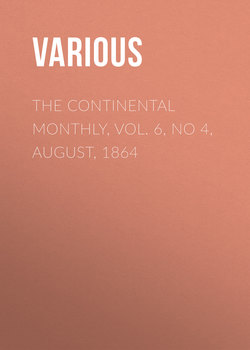Читать книгу The Continental Monthly, Vol. 6, No 4, August, 1864 - Various - Страница 6
DOES THE MOON REVOLVE ON ITS AXIS?
ОглавлениеAs this question has elicited considerable discussion, at various times, the following may be considered in elucidation.
A revolution on an axis is simply that of a body turning entirely round upon its own centre. The only centre around which the moon performs a revolution is very far from its own proper axis, being situated at the centre of the earth, the focus of its orbit, and as it has no other rotating motion around the earth, it cannot revolve on its own central axis.
A body fixed in position, or pierced and held by a rod, cannot revolve upon its centre, and when swung round by this rod or handle, performs only a revolution in orbit, as does the moon. The moon, during the process of forming a solid crust, by the constant attraction of the earth upon one side, only, became elongated, by calculation, about thirty miles (from its centre as a round body) toward the earth; consequently, by its form, like the body pierced with a rod, is transfixed by its gravitation, and, therefore, cannot revolve upon its own central axis.
The difference of axial revolution of a wheel or globe, is simply that the former turns upon an actual and the latter upon an imaginary axle, placed at its centre, Now, by way of analogy, fasten, immovably, a ball upon the rim of a revolving wheel, and then judge whether the ball can perform one simultaneous revolution on its own axis, in the same time that it performs a revolution in orbit, made by one complete turn of the wheel; and if not (which is assuredly the case, for it is fixed immovably), then neither can the moon perform such revolution on its axis, in the same time that it makes one revolution in orbit; because, like the ball immovably fixed upon the rim of the wheel, it, too, is transfixed by gravitation, from its very form, as if pierced with a rod, whose other extremity is attached to the centre of the earth, its only proper focus of motion, and, therefore, cannot revolve upon its own central axis.
A balloon elongated on one side, and carrying ballast on that side, would be like the moon in form, and when suspended in air, like the moon, too, in having its heaviest matter always toward the centre of the earth. Now let this balloon go entirely round the earth: it will, like the moon, continue to present the weightiest, elongated side always toward the centre of the earth; it, consequently, like the moon, cannot revolve upon its own central axis, as gravitation alone would prevent this anomaly, in both cases.
As well might it be said that a horse, harnessed to a beam, and going round a ring, or an imprisoned stone swung round in a sling, make each one simultaneous revolution on their axes, when their very positions are a sufficient refutation! or that the balls in an orrery, attached immovably to the ends of their respective rods, and turning with them (merely to show revolutions in orbits), perform each a simultaneous revolution on their axis, when such claim would be simply ridiculous, since the only revolution, in each case, has its focus outside of the ball, therefore orbital only; and so, too, with the moon, whose motion is precisely analogous, and prejudice alone can retain such an unphilosophical hypothesis as its axial revolution.
